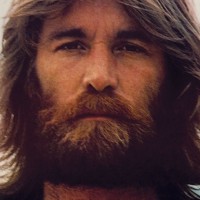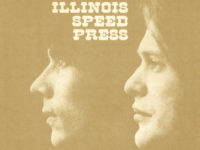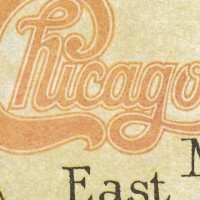In the mid-’70s, long-time Chicago producer James William Guercio was promoting his Colorado-based Caribou Ranch as a destination studio for recording albums.
Acts as varied as Elton John (the appropriately titled Caribou album), Supertramp (Even In the Quietest Moments), Joe Walsh (Barnstorm), Chicago and the Beach Boys recorded albums at Caribou. Billy Joel also makes reference to the ranch in “New York State of Mind” (“Been high up in the Rockies, under the evergreens”), as he briefly stopped there on the journey back after saying goodbye to Hollywood.
Gerard McMahon bounced around the U.S. in the early ’70s, spending time in L.A., New York, and Boulder. Guercio was wowed by an opening set McMahon played in Colorado for Tommy Bolin of Deep Purple fame, so he created a 10-member studio band simply dubbed “Gerard” for the British songwriter, vocalist and multi-instrumentalist.
They had some regional success, but Gerard never really caught on nationwide. Still, their lone studio project remains a testament to James William Guercio’s producing prowess – and the talents of the Chicago horn section at near the height of their powers.
James Pankow, Lee Loughnane and Walt Parazaider weren’t the last Chicago connections. These sessions also included the band’s late Brazilian percussionist Laudir de Olivera; Pankow handled all of the arrangements. The cover was also styled after 1972’s Chicago V, with a similar logo designed by John Berg. All of that can make Gerard feel like a lost Chicago album – and, for many Chicago fans, it was a pure delight. Still, one can understand why Gerard was one and done.
Gerard McMahon had been a long-time sessions musician, having backed up others for much of his career. Gerard should have been an opportunity to carve out his own niche in the world. Instead, comparisons with Chicago were unavoidable. The horns served as a cornerstone, and no doubt were an excellent idea from a marketing standpoint. But Gerard quickly begins to feel derivative, despite featuring a batch of songs written or co-written by McMahon.
In the end, Gerard was really just another excellent promo for Caribou Ranch. The frustration must have been overwhelming for McMahon, who walked away looking like something of a copycat. Chicago fans also had to confront the fact that Gerard was a stronger album than others from the same era – including Chicago VI, Chicago VIII, and Chicago X.
After the dissolution of Gerard, McMahon went on to a successful career as a songwriter for other artists, and also worked in commercials, television and films. His best-known subsequent track was 1987’s “Cry Little Sister,” which appeared on The Lost Boys soundtrack. Gerard McMahon later returned to collaborate with Chicago again, co-writing “What Does It Take,” “One From the Heart” and “Only Time Can Heal the Wounded” for 1991’s Twenty 1.
Having found a promo copy of the album through Discogs, it’s interesting to see which songs were being pushed to radio stations. Recommended Gerard tracks include “Hello Operator,” “Silver Strings,” and “Good Yankee Boy.” Unfortunately, Gerard does not appear to have ever been released on compact disc.
- The Most Surprising Moment on Alan Parsons Project’s ‘Eve’ - August 27, 2024
- Why the Audiobook Versions of Jimmy Barnes’ Autobiographies Are Definitive - June 24, 2024
- Kahvas Jute – ‘Wide Open’ (1970): Antipodean April - April 28, 2024




